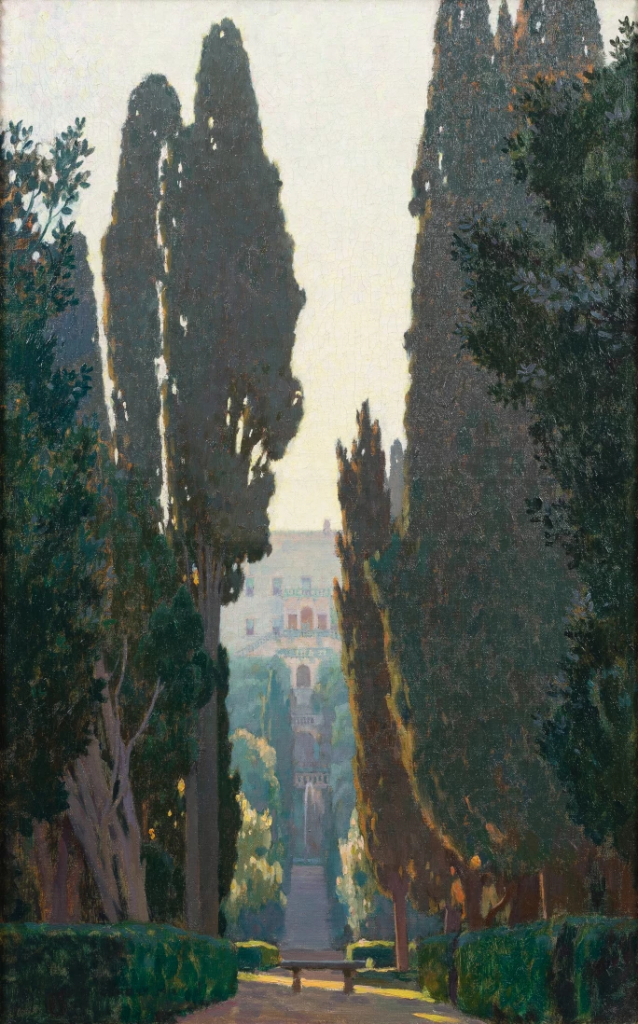A number of talented 20th century artists have long been forgotten in art history and overlooked by the market. As is often the case, the great names are often the central focus, and those who first appear less important take a longer time to gain recognition. That requires leaving the beaten path and exploring new avenues…
The art of any period is not limited to its avant-garde. That vanguard only constitutes the leading edge of its time: a small group of artists which establishes a new basis and changes the course of art history. Nevertheless, it is not the only group that deserves to be remembered in a lasting way. It would not be fitting to dismiss all the rest of that period’s production – whether mediocre or extraordinarily beautiful – sweeping it into a single vast, vague, indeterminate, disremembered lump. In today’s world, that view of modernity and progress in art is changing. It is becoming less monolithic, less ideological. For some time now, the borders have been changing and becoming more permeable. We no longer idealise a clan of modern artists as opposing the classical ones, systematically juxtaposing creative geniuses and academic pompiers as if they had actually faced off.

Claude Lepape, Still life with the Place Vendôme | Nature morte devant la Place Vendôme
Among the throng of artists who did not take the avant-garde path of abstraction, cubism or surrealism, many did execute works of a great beauty and indeed great originality. They did not constitute a homogeneous movement and did not share a common style; indeed, many evolved in different directions. Some were attracted to modernity, while others were completely resistant to it. They explored avenues that were different, parallel, and not devoid of interest, and many did so with immense talent.
These artists are currently undergoing a revival and the phenomenon is not limited to France. All over Europe and all over the world, some of these academically trained artists – those who did not choose the revolutionary radicality of the avant-garde but rather a middle-of-the-road approach based on tradition and practice – appear today just as profound and representative of modernity.

Georges-Paul Leroux, View of the gardens of the Villa d’Este in Tivoli | Vue des jardins de la Villa d’Este à Tivoli
That is manifest in the recent exhibitions dedicated to those painters and sculptors who cannot be assembled into a single “-ism” and are therefore improperly designated as “Art Deco”: Raphaël Delorme, Bernard Boutet de Monvel, Georges Dorignac and – in another register – André Devambez. Other artists in other lands have resurfaced to surprise the public, sometimes in dazzling ways, like Hans Emmenegger in Switzerland or Valerius De Saedeleer in Belgium.
In the early 20th century, Belgium went through a major aesthetic revival, drawing on the traditions of the 15th and 16th centuries and taking inspiration from Van Eyck and Brueghel. The school of Laethem-Saint-Martin and its great models – De Saedeleer of course, as well as Gustave van de Woestyne – paved the way, while painters such as Émile Fabry and Constant Montald took other trajectories; and yet they typify modern art just as much.

Suzanne Fabry, Triple self-portrait | Triple autoportrait
Italy is also now taking an inspired look at artists of the past such as Felice Casorati, Cagnaccio di San Pietro and Guido Cadorin and the same could be said of Spain, with Ignacio Zuloaga, José Maria Sert and Julio Romero de Torres; of Switzerland, with Niklaus Stoecklin and Raphy Dallèves; of Germany, with Herbert Böttger and Hermann Wöhler; of Holland, with Dick Ket and Jan Bogaerts; of Mexico, with Angel Zarraga; and of Japan, with Toshio Bando. Meanwhile, in the United States, how could Edward Hopper be described other than as a figurative artist who rejected the more avant-garde movements of his time?
Since the tremendous success of the Boutet de Monvel auction that Sotheby’s held in 2016, no further proof is required. There is now space on the art market – and not insignificant space – for the many talented painters, sculptors, illustrators and engravers who did not always follow in the footsteps of their more radical fellow artists, and yet who made just as significant a contribution to the artistic landscape of every country between 1900 and 1950.

Joseph Ferdinand Doeve, called Eppo Doeve | Joseph Ferdinand Doeve, dit Eppo Doeve, The Mount Bromo, Java | Le volcan Bromo, à Java
For those who wish to purchase a work created between the Belle Époque and WWII, and for whom Picasso, Klee, Kandinsky, Mondrian and their close followers have been out-of-reach for some time, today’s market makes this vast group of unknown artists available to the masses; but tomorrow’s market will not. For now, their works are still available, their talents to be discovered, their beauty to be revealed.
Source: Sotheby’s







